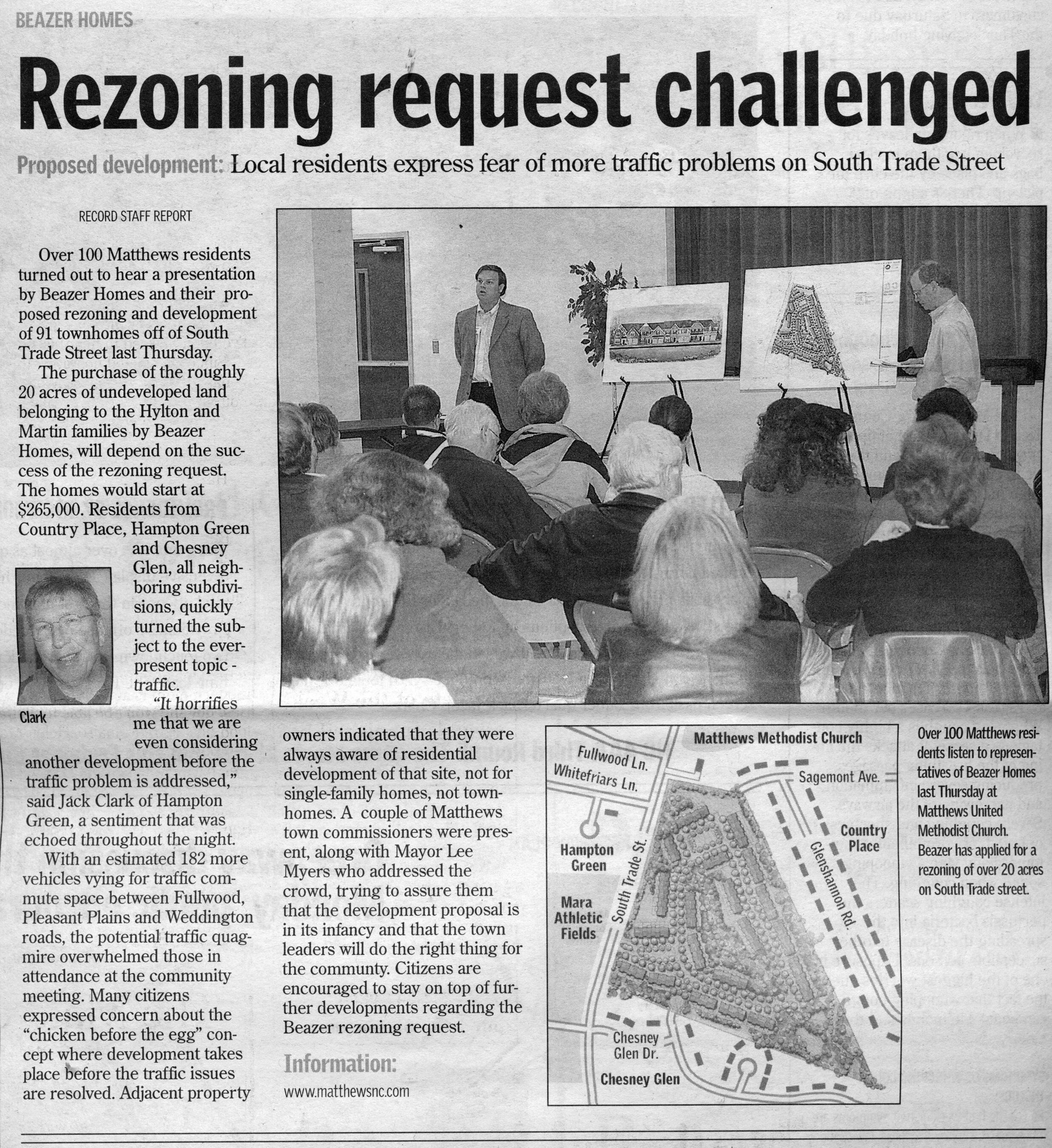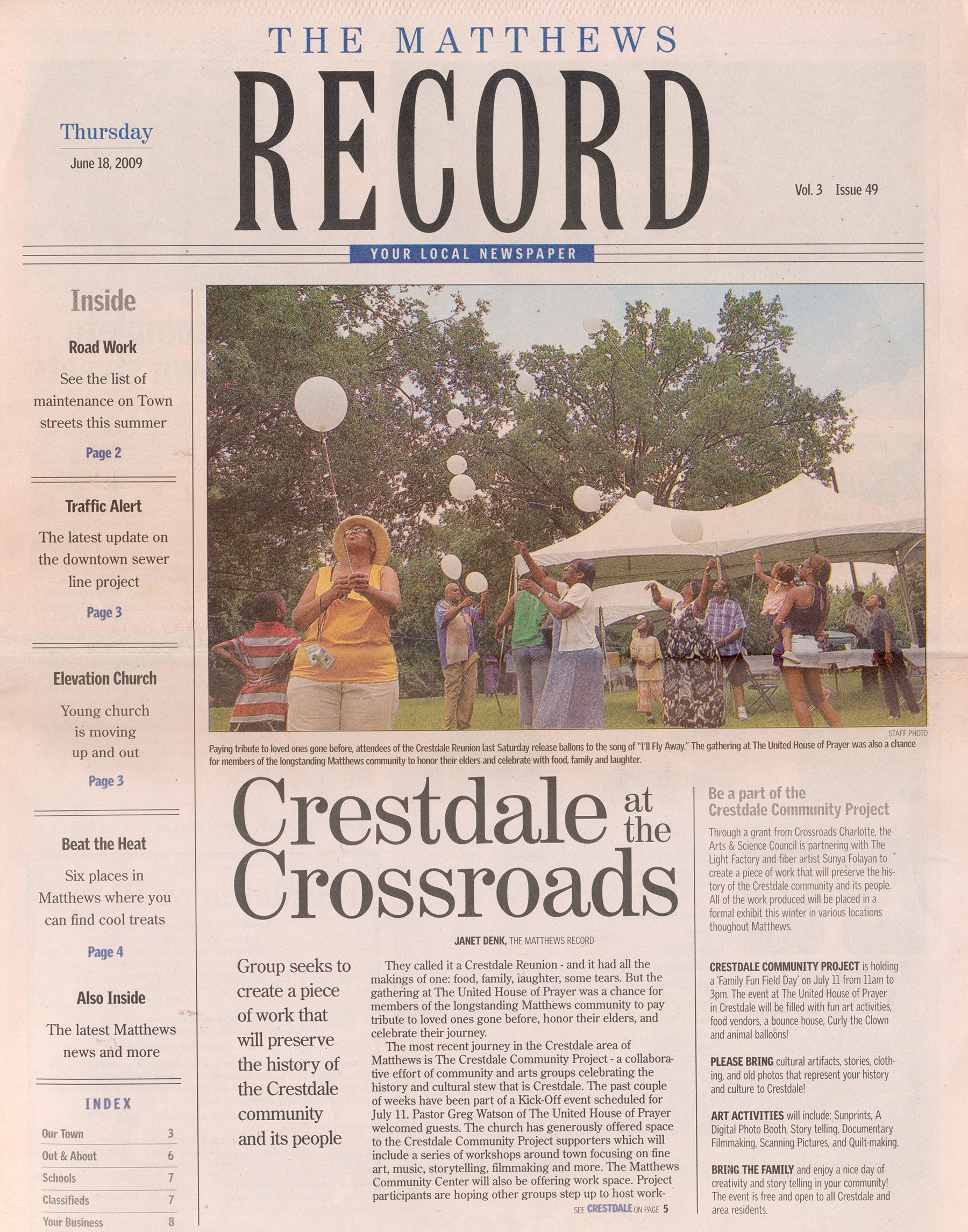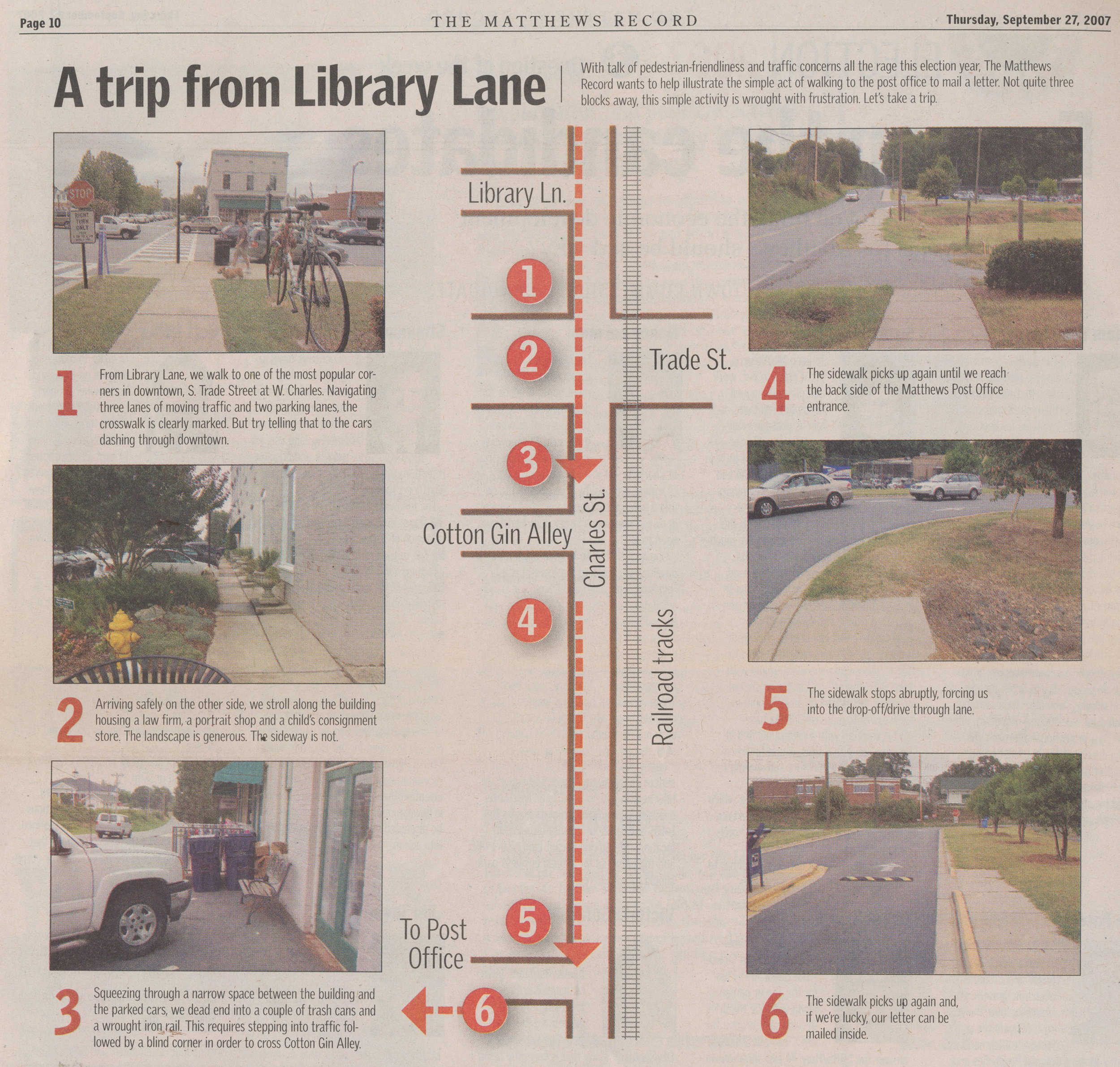With permission, The Beacon is archiving past issues of Matthews Record (also called Matthews News and Record and The Matthews Record) articles online. Throwback Thursday articles will include relevant content still facing Matthews today. This story was originally published June 15, 2006 and was written by Janet Denk.
Town leaders on Monday night overwhelmingly supported a plan to work and build a regional Sportsplex facility, in partnership with Mecklenburg County Park and Recreation Department, on land at Independence and I-485.
The nearly 160-acre area, owned by the County, is adjacent to property in Matthews referred to as the “Small Area Plan” which has been earmarked, since 1999, for a mixed-use development that would include business, residential and recreational facilities.
Money for the project would come from the Occupancy and Prepared Food Tax.
“This is a solid source of funding,” Town Manager Hazen Blodgett said, “because the folks who use it will be the ones who pay for it.”
A $25 million bond referendum approved by voters in November 2004, and to be used by 2007, includes $8 million for partnership projects such as this one set before Matthews. Matthews proposes to commit $2 million to the project.
The project is still in conceptual phase, though submitting an application was imperative this week. Areas all over Mecklenburg County will be submitting proposals, so the The Town Manager, along with the Parks Department, the Planning Department and the Town Commissioners, were scrambling to get the process underway. A special public meeting was held before last week’s Parks and Recreation Master Plan Workshop.
Currently both Cary and Greensboro have high quality soccer complexes but the Charlotte region is lacking. The plan, bu the County, is to design a state-of-the-art regional facility to compete for tourism dollars with associated field team sports.
“This is huge,” said Matthews Parks, Recreation and Cultural Department Director Geralynn Trellue. “We’re not thinking, ‘Just Matthews. Or just soccer.’ We’re thinking of the bigger picture. That means maximum use for this, almost 300-acre area.”
The fact that the facility will be run by the County and used more than 80% by local citizens makes the project attractive for many. The NCAA, ACC and other tournaments will make this a solid attraction. The Keith Corporation of Charlotte has committed to developing a family-entertainment complex within the proposed area, which would include hotels, restaurants and much more.
“We want to support this idea and get things underway so it can become an economic drive for the community,” said Blodgett whose Budget for fiscal year 2006-7 was adopted at last Monday’s meeting.
Brendon Pierce, of the Keith Corporation, shared information about comparable facilities and has worked several years on projects such as this. He comments Matthews’ involvement. This is the ideal land for this type of project,” he explained.
Town Commissioner Bill Dixon, who worked on the Parks and Recreation Board when this idea first came through in 2000, voted along with his colleagues in favor of the project. However, he urged caution. “Let’s avoid the slippery slope,” he said with regard to the debt service on such an ambitious project. “Are we okay in that department?” he glanced at Blodgett. The Town Manager returned a very comfortable nod in the affirmative.





























